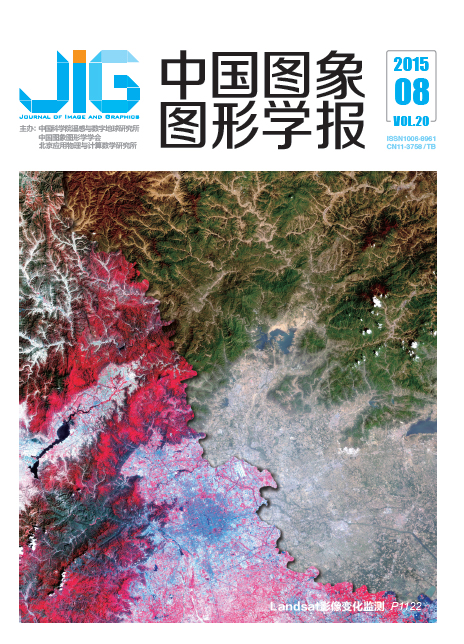
利用长时间序列Landsat分析博斯腾湖面积变化
摘 要
目的 近年来博斯腾湖面积波动较大,影响当地经济发展,掌握博斯腾湖面积变化及其与气候变化的相关规律,以指导湖泊保护和可持续利用管理策略。方法 利用Landsat影像计算1988—2014年博斯腾湖面积,监测并分析湖水面积年际变化及空间变化趋势,探讨博斯腾湖流域年降水量、年均气温变化和人类活动对湖水面积的影响,并将监测结果与MODIS数据计算的2000—2014年湖水面积以及1987—2011年实测水位数据进行对比验证。结果 结果表明,以2002年为分界线,博斯腾湖面积变化分2个阶段:1)1988—2002年,湖水面积呈增加趋势,增加288.88 km2,增长了31.62%;2)2002—2014年呈减小趋势,减小281.56 km2,减少了23.42%。根据气候条件分布差异,将博斯腾湖流域分为山区和平原区,分析发现:1988—2002年,山区年降水量和气温上升,与湖水面积呈显著正相关;2002年后,山区年降水量相对下降,平原区气温升高,人类活动用水量增加。结论 湖水面积变化受流域气候与人类活动共同作用,1988—2002年主要受山区气候影响,2002年后湖水面积缩小可能是气温升高和人类活动用水量增加导致。
关键词
Bosten Lake surface area changes analysis usinglong temporal Landsat image series
Sun Aimin1,2, Feng Zhongkui1, Ge Xiaoqing1, Luo Yu1,2, Li Shanshan1, Yan Fang1, Feng Xuxiang1(1.Institute of Remote Sensing and Digital Earth, Chinese Academy of Sciences, Beijing 100094, China;2.University of Chinese Academy of Sciences, Beijing 100049, China) Abstract
Objective In recent years, the water surface area of Bosten Lake, which greatly influences local economic development, has exhibited significant fluctuations. To understand the water area variability of Boston Lake and its association with climate change, change analysis is conducted to provide information for the formulation of strategies that are necessary for the protection and sustainable management of the lake. Method First, a long temporal series of Landsat-5 TM, Landsat=7 ETM+, and Landsat 8 OLI, which consists of 25 scene images, was used to compute the surface area of Bosten Lake from 1988 to 2014. Radiometric, geometric, and atmospheric corrections were executed on the raw remote sensing images to obtain reflectance data, and then the modified normalized difference water index and Otsu image segmentation method were combined to separate water body information from the background in the images. The inter-annual changes and spatial changesin the lake surface area in the past 27 years were monitored and analyzed. Second, the effects of annual precipitation and annual mean temperature changes in Bosten Lake basin on the lake surface area were each investigated using meteorological data; the impact of human activities on the area changes with reference to existing research about the lake water resources was also examined. Third, to compare and verify the accuracy of the lake surface area results derived from the long temporal series of Landsat images,two additional data were used, namely, the lake surface area computed using MODIS images from 2000 to 2014 and the in situ measurement of the water level from 1987 to 2011 by the local water resources survey bureau. Result With 2002 as the dividing line, theinter-annual changes in the lake surface area that had occurred in the past 27 years can be divided into two stages. 1) From 1988 to 2002, the lake surface area showed a significantly increasing trend, with a total increase of 288.88 km2(31.62%) and a mean annual increase of 20.63 km2. 2) From 2002 to 2014, the lake surface area showed a sharply decreasing trend,with a total decrease of 281.56 km2(23.42%) and a mean annual decrease of 23.46 km2. According to the differences in the climatic condition distributions, the Bosten Lake basin was divided into the mountain area and the plain area. Analysis reveals that, from 1988 to 2002, the annual precipitation and annual mean temperature that occurred in the mountain area increased, which shows a significantly positive relationship with the lake surface area. Since 2002, a relative decline had been detected in the annual precipitation in the mountain area, whereas the annual mean temperature in the plain area had increased; water consumption by human activities increased. Conclusion The lake surface area was affected by climate change, mainly in the mountain area, and human activities from 1988 to 2002. However, after 2002, temperature rise and water consumption increase may be the causes of the decrease in lake surface area.
Keywords
|



 中国图象图形学报 │ 京ICP备05080539号-4 │ 本系统由
中国图象图形学报 │ 京ICP备05080539号-4 │ 本系统由